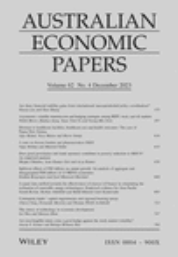Productivity gains enable real wage growth and improved standards of living. But whose income actually benefits from productivity gains when highly productivity urban locations in Australia, and other advanced economies, also are associated with worsening housing affordability and inequality?
This paper answers this question by empirically testing whether agglomeration effects vary across the wage distribution in Australia? And, how much of any agglomeration effect is retained by individuals across the wage distribution? Unconditional quantile regressions are employed to analyse changes in agglomeration effects across the before- and after-housing cost wage distribution. Information on individual earnings, housing costs and place of employment is sourced from the Household, Income and Labour Dynamics in Australia (HILDA). The paper utilises four pre-COVID waves of HILDA (2017–2020) as details on place of employment was first introduced in 2017. Agglomeration indices are constructed from Australian Bureau of Statistics census data using 17 industry (ANZSIC) classifications (2016, 2021).
The results show that the before-housing cost wages of higher-wage earners typically benefit twice as much as those of lower-wage earners. However, after adjusting for housing expenditure (mortgage payments and rents) the after-housing costs wage benefit for the lowest two wage earning deciles disappear and is transferred to owners of real estate. Higher wage earners retain approximately 50%–60% of the agglomeration benefit. It is thus higher wage earner, and owners of land and property, who typically benefit from agglomeration related productivity—often at the expense of lower-wage earners.

